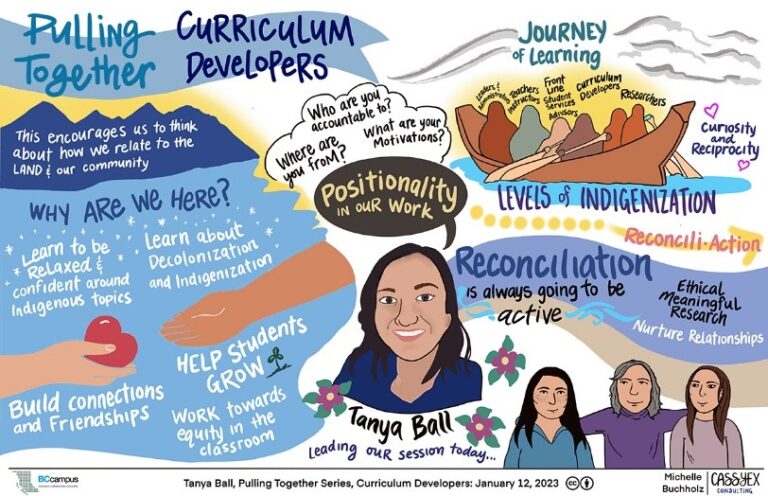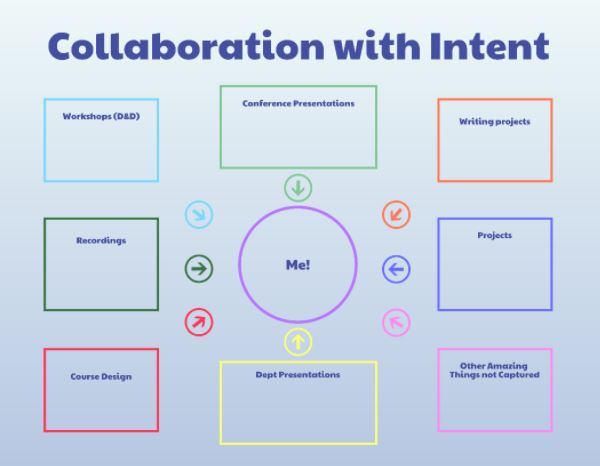Trauma-Informed Teaching
I first stepped into the world of trauma-informed teaching unknowingly. Living and working in Cambodia from 2006-2009, I had read of the population-wide trauma of the Khmer Rouge genocide and saw its clear effects in the older generation. After moving to Preah Vihear City, a rural provincial capital in the north of the country, I witnessed how both generational trauma, and more recent experiences of local conflict resulted in widespread traumatic experiences that seemed to extend to almost every member of society, including some of the youngest. I lacked the education and experience to fully understand what I saw. I slowly learned different ways of being with those who had experienced trauma, but also learned the challenges that can arise from witnessing the trauma of others, including compassion fatigue and burnout.
Since that time, I’ve come to understand that many classrooms include individuals who have been affected by trauma. I’ve been grateful to those who have taught me about trauma, its impacts, and how to engage with others in a more trauma-informed way. During my years at KPU, especially during my 1:1 interactions with students, I’ve come to appreciate the strength and determination of many of our students who have faced, and who continue to face, significant traumatic experiences.
What is Trauma?
The Canadian Association for Mental Health (2022) provides the following overview of trauma and its effects:
Trauma is the lasting emotional response that often results from living through a distressing event. Experiencing a traumatic event can harm a person’s sense of safety, sense of self, and ability to regulate emotions and navigate relationships. Long after the traumatic event occurs, people with trauma can often feel shame, helplessness, powerlessness and intense fear.
Traumatic experiences are widely varied, and include experiences of abuse, violence, warfare in military or civilian contexts, serious accidents, life-threatening health situations, and poverty. Additionally, historical community trauma can pass to subsequent generations. It is important to note that the same event may result in different experiences of trauma for different individuals (Davidson, 2017).
When we consider our teaching practice it is important to note that exposure to trauma is widespread and common. Read et al., (2011), in a study of students at two universities, found that 66% reported exposure to a major trauma; in the same study, nine percent of participants met diagnostic criteria for post-traumatic stress disorder (PTSD). The events of the COVID-19 pandemic have only expanded students’ exposure to trauma. With this context in mind, shifting to trauma-informed approaches is a vital support for all students.
In addition, experiences of trauma affect learning. Potential impacts of trauma include changes to thinking, including disruptions in cognitive and metacognitive abilities. This can appear as inhibition of curiosity and exploration, difficulty directing attention to tasks, inability to comprehend or remember classroom instructions, and difficulty organizing thoughts. The ability to retain and recall information may also be negatively impacted by aroused states connected to past or present trauma (Hayes et al., 2012; Hoch et al., 2015; Malarbi et al., 2017; Schweizer & Dalgleish, 2011; Vasterling et al., 2002). As educators, this helps us to understand why some students may have more difficulty with some types of learning. As we respond, we can begin by considering how our classroom environments can be shaped in a way that maintains safety for students.
Principles of Trauma-Informed Teaching
A trauma-informed teaching practice rests on six pillars (Center for Preparedness and Response, 2020; Imad, 2020).
- Safety: Safety includes attention to both physical and emotional environments. Practices that facilitate safety in physical environments include clear signage, clear paths of entry and exit in classrooms, and access to accessible/gender neutral washrooms (Davidson, 2017). Practices that support emotional safety include beginning courses with a welcoming and inviting personal introduction and providing access to individual support in office hours. In addition, we can offer compassion and understanding when we witness or listen to students’ experiences.
- Trustworthiness: Providing learners with clear and consistent information about learning objectives and course procedures facilitates an experience of trustworthiness. Trustworthiness helps learners know what they can expect in each of their classes and other learning tasks, eliminating surprises and reducing the potential for unnecessary stress.
- Peer Support: Connecting learners to each other contributes to a safer learning community; conversely, when learners lack community, their learning experiences may be marked by isolation, exclusion, and even microaggressions from fellow students.
- Collaboration: Considering and thoughtfully shifting power dynamics in the classroom allows for a genuine learning collaboration between instructor and student. This may involve reflection on points at which we may shift into modes of control rather than facilitation of students’ learning and development.
- Choice: A trauma informed teaching practice seeks ways to provide students with choice over their ways of accessing knowledge and representing their learning in assessments. The principles of Universal Design for Learning (UDL) provide a valuable complement to trauma informed practice.
- Recognition of cultural, historical, and gender issues: This dimension of trauma informed practice includes recognizing the impacts of historical traumas within communities, as well as demonstrating cultural sensitivity in the classroom. It recognizes that some student groups are at an increased risk of trauma, including Indigenous students, refugee-background students, former youth-in-care, 2SLGBTQ+ students, and non-traditional students (Davidson, 2017).
Self-Care and Secondary Traumatization
Actively choosing to become a trauma informed educator includes practices of self-care, recognizing the potential for secondary traumatization. Secondary traumatic stress can occur when listening to another’s traumatic experience, or witnessing the distress caused by a traumatic event. Maintaining resilience and health includes practices that care for the physical, mental, emotional, relational, vocational, and spiritual parts of ourselves (Center on Great Teachers and Leaders, 2020). This self-assessment provides a tool for maintaining self-care as an educator during and after the pandemic. For some of us, self-care also involves recognition of our own traumas, how they have shaped us, and how they influence our experiences as educators. As we wisely implement self-care for ourselves, we can also encourage our students to adopt practices that support their own well-being.
Moving Forward
Consider reviewing the six principles of trauma-informed education described above. What is one small step you can take in your current context to expand your repertoire of teaching practices?
**Many thanks for Farhad Dastur for his valuable feedback on this blog post.
References
Canadian Association for Mental Health. (2022). Trauma. https://www.camh.ca/en/health-info/mental-illness-and-addiction-index/trauma
Center for Preparedness and Response. (2020). Six guiding principles to a trauma-informed approach. https://www.cdc.gov/cpr/infographics/00_docs/TRAINING_EMERGENCY_RESPONDERS_FINAL.pdf
Center on Great Teachers and Leaders. (2020). Educator resilience and trauma-informed self-care: Self-assessment and planning tool. American Institutes for Research. https://gtlcenter.org/sites/default/files/Educator-Resilience-Trauma-Informed-Self-Care-Self-Assessment.pdf
Davidson, S. (2017). Trauma-informed practices for postsecondary education: A guide. Education Northwest. https://educationnorthwest.org/resources/trauma-informed-practices-postsecondary-education-guide
Hayes, J. P., VanElzakker, M. B., & Shin, L. M. (2012). Emotion and cognition interactions in PTSD: A review of neurocognitive and neuroimaging studies. Frontiers in Integrative Neuroscience, 6. https://doi.org/10.3389/fnint.2012.00089
Hoch, A., Stewart, D., Webb, K., & Wyandt-Hiebert, M. A. (2015). Trauma-informed care on a college campus. American College Health Association, Orlando, FL. https://www.pacesconnection.com/g/san-diego-state-university-aces-connection/fileSendAction/fcType/5/fcOid/466307103251145815/fodoid/466307103251145814/Trauma%20Informed%20PP.pdf
Imad, M. (2020, June 3). Leveraging the neuroscience of now. Inside Higher Education. https://www.insidehighered.com/advice/2020/06/03/seven-recommendations-helping-students-thrive-times-trauma
Malarbi, S., Abu-Rayya, H. M., Muscara, F., & Stargatt, R. (2017). Neuropsychological functioning of childhood trauma and post-traumatic stress disorder: A meta-analysis. Neuroscience & Biobehavioral Reviews, 72, 68–86. https://doi.org/10.1016/j.neubiorev.2016.11.004
Read, J. P., Ouimette, P., White, J., Colder, C., & Farrow, S. (2011). Rates of DSM–IV–TR trauma exposure and posttraumatic stress disorder among newly matriculated college students. Psychological Trauma: Theory, Research, Practice, and Policy, 3(2), 148–156. pdh. https://doi.org/10.1037/a0021260
Schweizer, S., & Dalgleish, T. (2011). Emotional working memory capacity in posttraumatic stress disorder (PTSD). Behaviour Research and Therapy, 49(8), 498–504. https://doi.org/10.1016/j.brat.2011.05.007
Vasterling, J. J., Duke, L. M., Brailey, K., Constans, J. I., Allain, A. N., & Sutker, P. B. (2002). Attention, learning, and memory performances and intellectual resources in Vietnam veterans: PTSD and no disorder comparisons. Neuropsychology, 16(1), 5–14. https://doi.org/10.1037/0894-4105.16.1.5
Christina supports faculty in their journey of understanding and enriching learning for culturally diverse students, while aiming to facilitate a more joyful intercultural teaching experience. In addition to her work in the Teaching and Learning Commons, her KPU Learning Strategist role allows her to see the learning process from the student side and to integrate her understanding of both faculty and student perspectives. Her educational background includes applied linguistics and educational studies, and her roles have included ESL instructor, literacy consultant, researcher, and adult educator in both Canadian and international contexts. Christina facilitates workshops, connects faculty with relevant resources, and is available for individual consultations.





